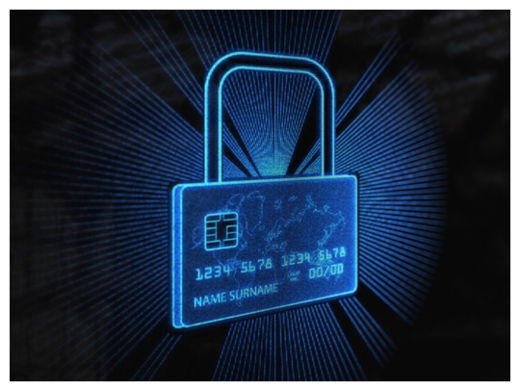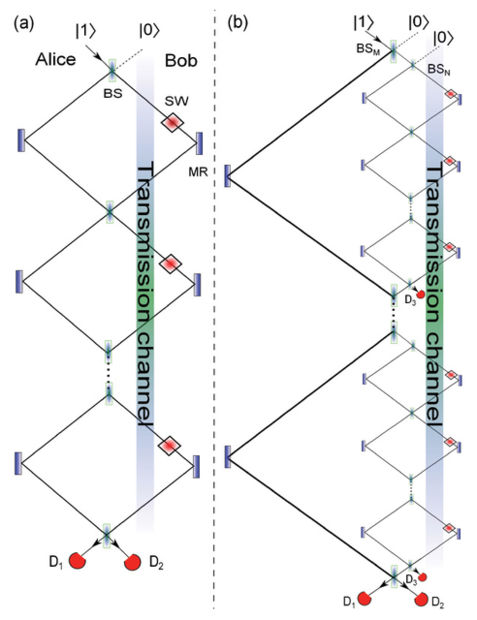
Quantum physicist M. Suhail Zubairy, along with a post-doctoral fellow and Saudi researchers, have discovered a form of "almost psychic communication" in which information can be exchanged between two parties without any physical particles traveling between them.
The research, to be published in the April 26 edition of the prestigious journal Physical Review Letters and reviewed earlier this week in Physics World, could one day have major applications in the field of optical communication, particularly for communications security.
In recent years, this field has made major improvements in allowing for the secure transfer of credit-card information between consumer and vendor. With this new research, it could go a tantalizing step further: There simply wouldn't be any data to steal in the first place within the communication channel.
Zubairy, however, is careful not to make any claims about applicability of the discovery just yet.
"Right now, this is a new, beautiful idea," said Zubairy, a professor in the Department of Physics and Astronomy and holder of the Munnerlyn-Heep Chair in Quantum Optics. "I'm looking at it like a painter or poet looks at art or poetry. Could there be use? Yes, but our main goal right now was simply to understand the basic science first. Who knows what kinds of applications could be envisioned in the future."
Zubairy and the researchers use the example of "Alice" and "Bob" to illustrate their findings, which are detailed in a paper titled "Protocol for Direct Counterfactual Quantum Communication."

The basic set-up works like this: A photon leaving Alice's station can, on Bob's end, have its polarization state switched or kept the same. In other words, Bob has the choice of either absorbing the bit of information or not absorbing it. Depending on what Bob chooses, different detectors are set off on Alice's end. So Alice can figure out Bob's choice by checking her own detectors. The counterintuitive result: A communication occurred between Alice and Bob, but the photon never left Alice's station.
"In technical terms, we call this 'counterfactual,'" Zubairy said. "It's been believed that if two parties want to communicate, something needs to be sent, and something is allowing for its passage. That's been an underlying assumption in every communications system. This is the first possible setup where that doesn't exist. That's what I mean by 'almost psychic.'"
Zubairy, who is a member of Texas A&M's world-renowned Institute for Quantum Science and Engineering, says he was inspired by the development in recent years of a branch of quantum cryptography called quantum key distribution, a system that allows secure communication between two parties by the exchange of "keys" that allow for decoding of messages sent through a public channel.
"What we are proposing goes a couple steps beyond that," Zubairy said. "We are talking about direct communication, not through a key. Now we have a protocol for eliminating the middle man. From a fundamental point of view, this is amazing. It sort of brings up these old questions, such as what is a photon?"
Zubairy co-authored the paper along with a Texas A&M post-doctoral fellow, Zheng-Hong Li, and two researchers from the National Center for Mathematics and Physics at the King Abdulaziz City for Science and Technology in Saudi Arabia, Hatim Salih and Mohammad Al-Amri.
"The concept of two parties communicating without exchanging particles is mind-boggling and highly counterintuitive," Al-Amri said. "It raises interesting questions: How could Alice sense Bob's moves when her photon never left her station?"
A member of the Texas A&M Physics and Astronomy faculty since 2004, Zubairy earned his master's in physics from Quaid-I-Azam University in Pakistan in 1974 and his doctorate in physics from the University of Rochester in 1978. His honors include fellowships from the Pakistan Academy of Sciences, Optical Society of America and American Physical Society. He also is a co-author, along with fellow Texas A&M quantum physicist Marlan Scully, of a 1997 textbook titled "Quantum Optics."
To learn more about Zubairy's research, click here.



Reader Comments
to our Newsletter